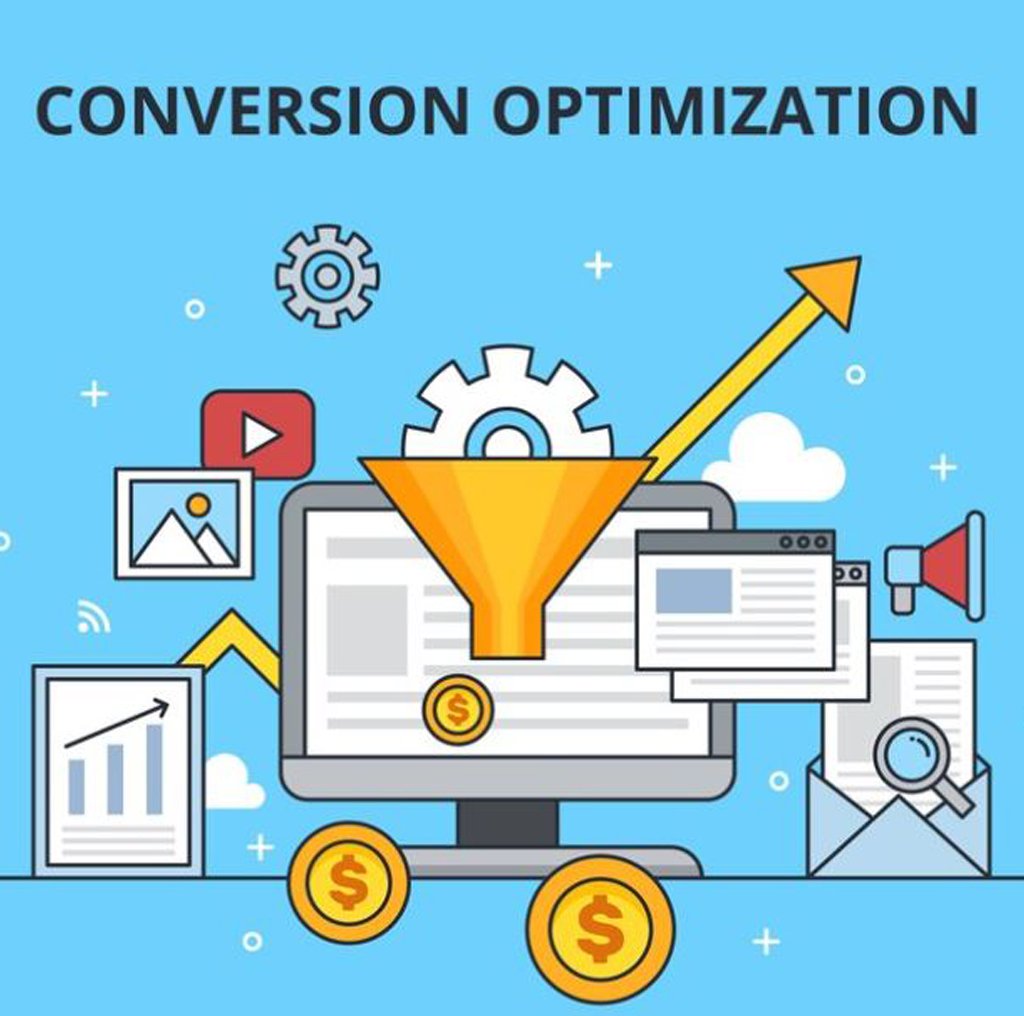The Impact of Mobile Optimization on Conversion Rate Optimization (CRO)
June 04, 2024 | Digital Techtune

In the modern digital landscape, mobile optimization has become critical for businesses looking to enhance their online presence and drive conversions. With the increasing usage of mobile devices for browsing, shopping, and accessing information, ensuring that websites and online platforms are optimized for mobile users is no longer optional—it’s essential. This essay explores the impact of mobile optimization on Conversion Rate Optimization (CRO), highlighting the importance of mobile-friendly design, user experience (UX), speed, and other critical factors that contribute to higher conversion rates.
The Rise of Mobile Usage
Mobile devices have seen a meteoric rise in usage over the past decade. According to a report by Statista, as of 2023, over 60% of global web traffic comes from mobile devices. This shift in user behavior necessitates that businesses prioritize mobile optimization to meet the expectations of their audience. Mobile users have different needs and behaviors than desktop users, and addressing these effectively can significantly impact CRO.
Understanding Conversion Rate Optimization (CRO)
CRO is the systematic process of increasing the percentage of website visitors who take a desired action—be it making a purchase, filling out a form, or subscribing to a newsletter. It involves understanding how users navigate a site, their actions, and what stops them from completing the desired goals. Effective CRO strategies require a deep understanding of user behavior, robust data analysis, and continuous testing and optimization.
The Role of Mobile Optimization in CRO
User Experience (UX)
User experience is a cornerstone of both mobile optimization and CRO. A seamless and intuitive UX on mobile devices can significantly enhance user satisfaction and drive conversions. Key elements of a mobile-optimized UX include:
- Responsive Design: Ensuring that the website adjusts smoothly to different screen sizes and orientations.
- Easy Navigation: Simplified menus and clear, concise pathways that guide users toward conversion actions.
- Touch-Friendly Interface: Buttons, links, and forms that are easy to interact with using touch gestures.
A poor mobile UX can lead to frustration and abandonment, while an optimized experience can increase the likelihood of conversion. For instance, a study by Google found that 61% of users are unlikely to return to a mobile site they had trouble accessing, and 40% visit a competitor’s site instead.
Mobile Speed Optimization
Website speed is a critical factor in mobile optimization. Mobile users expect fast-loading pages, and delays can lead to significant drops in conversion rates. According to Google’s research, as page load time goes from one second to ten seconds, the probability of a mobile site visitor bouncing increases by 123%.
To improve mobile speed, businesses can implement various strategies:
- Optimizing Images: Compressing images without sacrificing quality to reduce load times.
- Minimizing HTTP Requests: Reducing the number of elements on a page that require HTTP requests, such as scripts, images, and CSS files.
- Leveraging Browser Caching: Storing frequently accessed resources in the user’s local storage to speed up subsequent visits.
Faster loading times enhance user satisfaction and reduce bounce rates, directly contributing to higher conversion rates.
Mobile-Friendly Content
The content displayed on mobile devices should be easily readable and engaging. This includes:
- Readable Fonts: Use appropriate font sizes and styles that are legible on small screens.
- Concise Copy: Keeping text concise and to the point, as mobile users often scan rather than read in detail.
- Engaging Media: Using videos and images that are optimized for mobile viewing.
Content tailored for mobile consumption can keep users engaged and more likely to convert.
Case Studies of Mobile Optimization Impact on CRO
Case Study 1: E-commerce Retailer
An e-commerce retailer noticed a higher bounce rate on their mobile site than their desktop site. After an analysis, they discovered that their mobile site was not fully responsive, and the checkout process was cumbersome. They implemented the following changes:
- Responsive Redesign: They revamped their site to ensure it was fully responsive, providing a consistent experience across all devices.
- Streamlined Checkout: They simplified the checkout process, reducing the number of steps and ensuring forms were easy to fill out on mobile devices.
As a result, they saw a 30% increase in mobile conversions and a 20% decrease in bounce rates.
Case Study 2: Travel Booking Platform
A travel booking platform struggled with slow mobile site speeds, leading to high abandonment rates. They implemented several speed optimization techniques, including image compression, minimizing HTTP requests, and leveraging browser caching. Post-optimization, they achieved a 40% reduction in page load times and a 25% increase in conversion rates.
Tools and Techniques for Mobile Optimization
Tools
- Google Mobile-Friendly Test: This tool evaluates how easily a visitor can use your page on a mobile device and provides suggestions for improvement.
- PageSpeed Insights: Google’s tool analyzes a web page’s content, and then generates suggestions to make that page faster.
- Hotjar: Provides heatmaps and session recordings to understand user behavior on mobile devices.
Techniques
- Adaptive Design: Creating different layouts for devices rather than a one-size-fits-all approach.
- Accelerated Mobile Pages (AMP): Stripping down web pages to the essentials to ensure fast loading times on mobile devices.
- Progressive Web Apps (PWAs): Offering app-like experiences on the web, combining the best of web and mobile apps.
Challenges in Mobile Optimization
Fragmented Device Ecosystem
The wide variety of mobile devices with different screen sizes, operating systems, and capabilities poses a challenge for mobile optimization. Ensuring a consistent experience across all these devices requires thorough testing and often, compromises in design.
Balancing Aesthetics and Functionality
Designing for mobile often means balancing aesthetics with functionality. While visually appealing designs are important, they should not come at the expense of usability and speed.
Continuous Monitoring and Updating
Mobile optimization is not a one-time task but an ongoing process. As new devices, operating systems, and user behaviors emerge, continuous monitoring and updating are necessary to maintain optimal performance and conversion rates.
The Future of Mobile Optimization and CRO
The future of mobile optimization and CRO will likely be influenced by advancements in technology and changing user behaviors. Key trends to watch include:
Voice Search and Conversational Interfaces
With the rise of voice-activated assistants like Siri, Google Assistant, and Alexa, optimizing for voice search is becoming increasingly important. This involves focusing on natural language processing and understanding user intent.
Artificial Intelligence (AI) and Machine Learning
AI and machine learning can provide deeper insights into user behavior and enable more personalized experiences. Predictive analytics can help anticipate user needs and optimize conversion pathways in real time.
Augmented Reality (AR) and Virtual Reality (VR)
AR and VR technologies offer new ways to engage users, particularly in the retail and real estate sectors. Optimizing these experiences for mobile devices will be crucial as these technologies become more mainstream.
Mobile optimization is a vital component of Conversion Rate Optimization (CRO). As mobile device usage continues to grow, businesses must prioritize creating seamless, fast, and engaging mobile experiences to drive conversions. By focusing on user experience, speed, and mobile-friendly content, companies can significantly enhance their CRO efforts. Continuous testing, monitoring, and adaptation to new technologies and user behaviors will ensure sustained success in an increasingly mobile-first world.
The impact of mobile optimization on CRO cannot be overstated. It bridges the gap between attracting mobile traffic and converting it into tangible business outcomes, ultimately driving growth and success in the digital age.

